
Welcome to CivilGEO Knowledge Base
Welcome to CivilGEO Knowledge Base

Welcome to CivilGEO Knowledge Base
Welcome to CivilGEO Knowledge Base
The Export to Shapefile command of CivilGEO software allows the user to export a specific layer or set of features of the defined model as shapefiles. Saving the data in the shapefile format allows the user to use it with other applications effortlessly.
Follow the steps below to use the Export to Shapefile command:
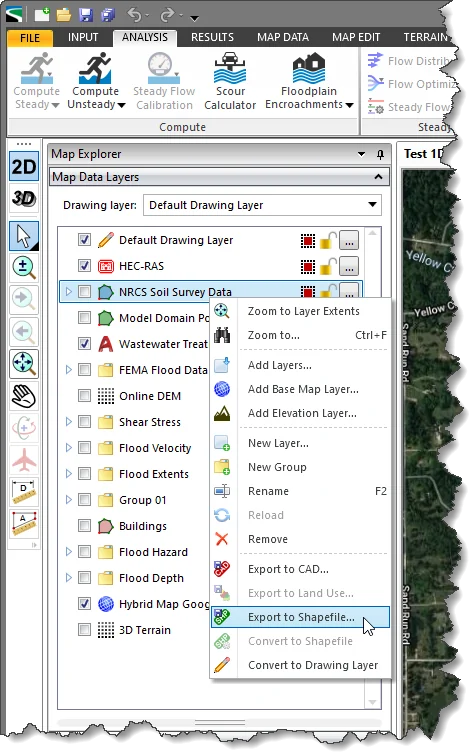
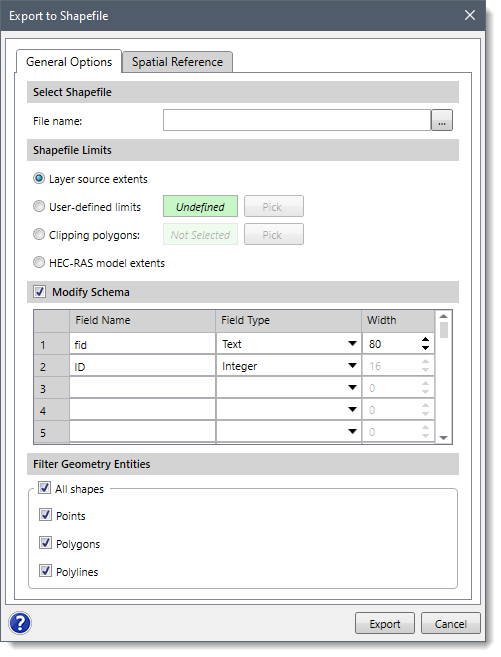
The following sections describe the Export to Shapefile command and how to interact with the above dialog box.
This tabbed panel is used to define the general options for exporting the layer as a shapefile.
The Select Shapefile section allows the user to define the location where the user can save the exported results. Click the […] button beside the File name entry to specify the directory location and file name to save the exported results. The software will display the Select Shapefile dialog box. From the displayed dialog box, browse to the location to save the file, enter the file name (it should have a file extension of .shp), and then click the [Save] button.
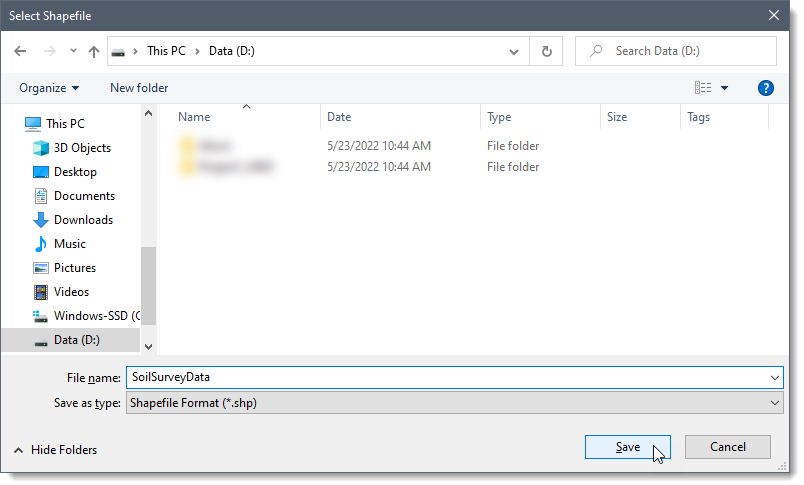
On clicking the [Save] button, the Export to Shapefile dialog box will be redisplayed, and the complete directory path and file name will be shown in the File name entry.
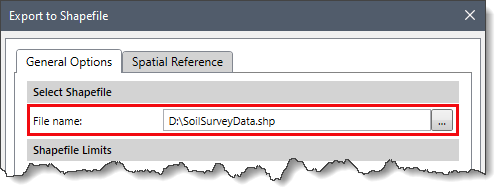
This section is used to define the maximum limits for exporting the shapefile.
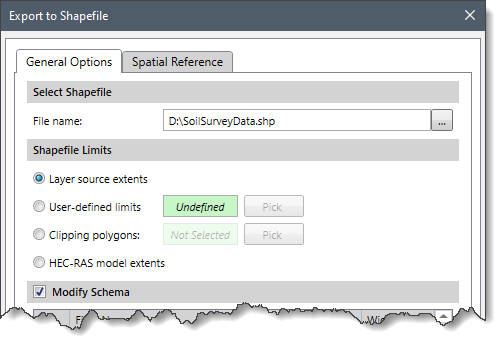
The following options are available:
This optional section contains a data table that allows the user to add/edit shapefile attributes such as name, values, and data types.
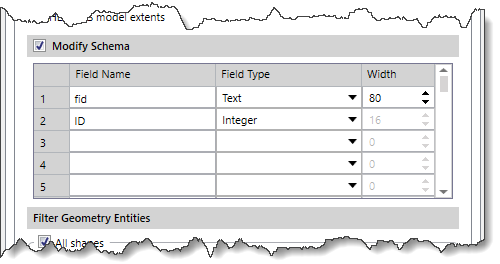
This data table requires the following data:
This section allows the user to select single or multiple shapes when exporting the layer as a shapefile. The user can check the checkboxes corresponding to the shapes to export them in the shapefile.
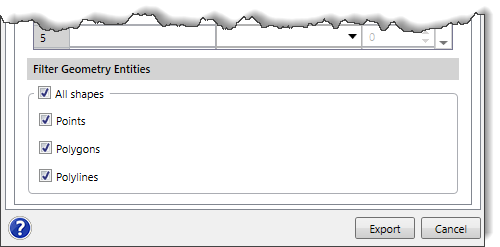
This tabbed panel allows the user to specify the Coordinate Reference System (CRS) for the layer.
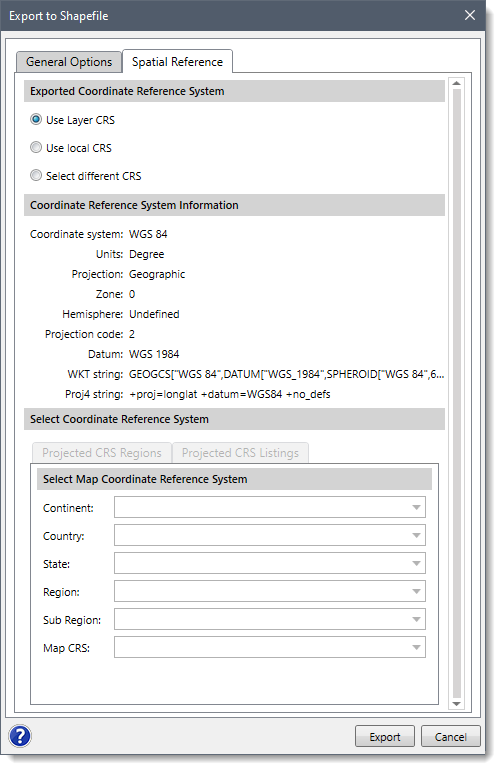
Note that this panel works similar to that of the Spatial Reference panel of the Export HEC-HMS to CAD command. Hence, refer to this article in our knowledge base to learn more about it.
When all the options have been defined, click the [Export] button. The software will then export the layer as a shapefile at the specified location.
 1-800-301-02-955
1-800-301-02-955
 608-729-5100
608-729-5100
(US and Canada)
 [email protected]
[email protected]
 +1 608-729-5100
+1 608-729-5100
CivilGEO India
Graphix Tower, A-13 A
3rd Floor, Sector 62
Noida, Uttar Pradesh 201309
IndiaTel:
1-800-301-02-955 or
+91 022-3831-8601
CivilGEO United States
8383 Greenway Blvd
6th Floor
Middleton, WI 53562
USATel:
608-729-5100 or
800-488-4110
Copyright © CivilGEO, Inc. All rights reserved. The CivilGEO logo, “GeoSTORM”, “GeoHECHMS”, “GeoHECRAS”, and “Ready To Engineer” are registered trademarks of CivilGEO,Inc.
All other brands, company names, product names or trademarks belong to their respective holders.
We use cookies to give you the best online experience. By agreeing you accept the use of cookies in accordance with our cookie policy.
When you visit any web site, it may store or retrieve information on your browser, mostly in the form of cookies. Control your personal Cookie Services here.
The ZoomInfo WebSights snippet drops three cookies to track Unique Visits:
1. _pxhd - Related to the Perimeter X security layer (Perimeter X isused to prevent bot attacks).
2. _cfduid - Related to the CloudFlare security layer (CloudFlare is the Network Security protocol that ZoomInfo uses to orchestrate the rate limiting rules).
3. visitorId - This is how WebSights identifies recurring visitors








